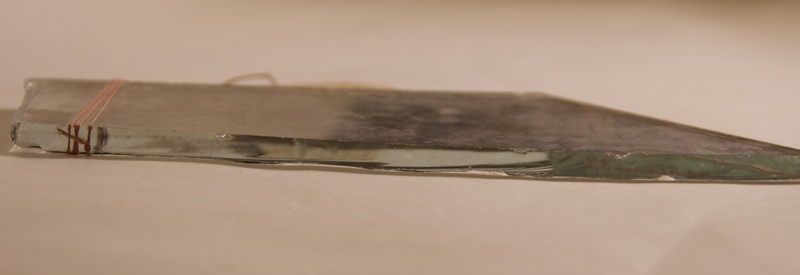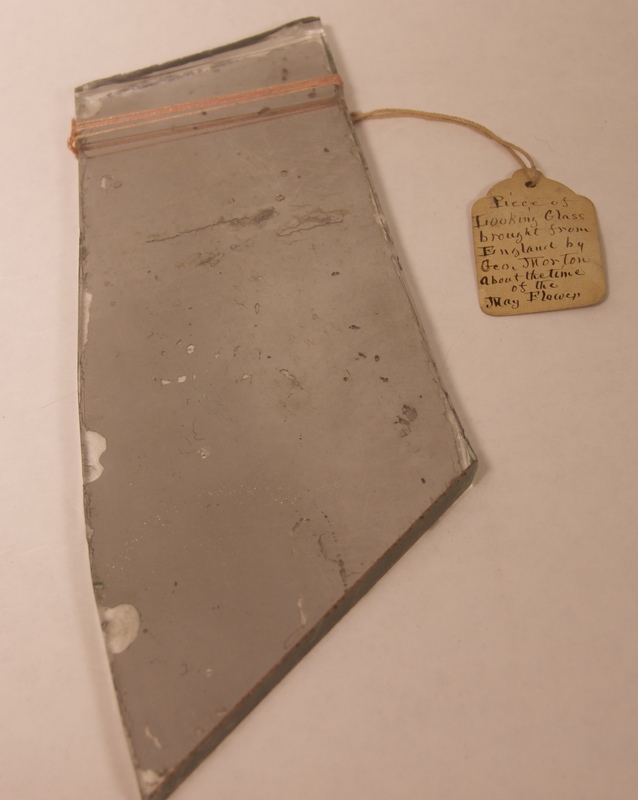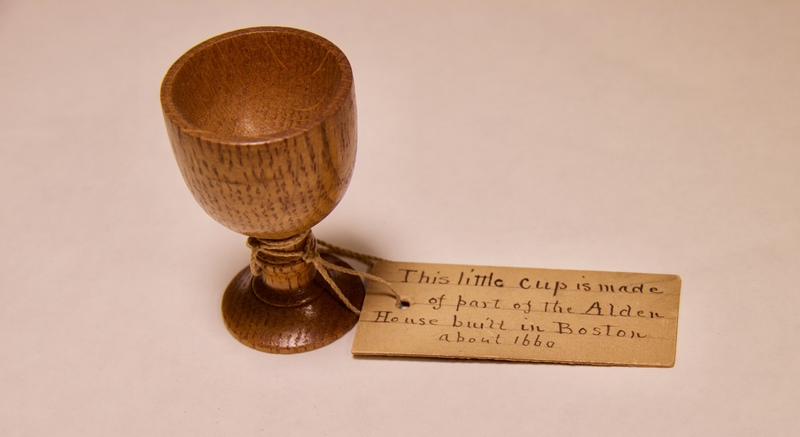Souvenirs in the 19th century
The Mayflower still has strong connotations today but to a modern viewer this broken piece of a mirror would still appear as a trash yard scrap to many even given its connection to the settlement of America. For example, a recent article in the online publication the Vermonter describes Henry Sheldon as a “local junk dealer.” However, during the 19th century and the years Henry Sheldon created his collection, relics like these were viewed differently. Back then these types of historical souvenirs brought the satisfaction of owning a real piece of history. For example, when George Washington’s home, Mount Vernon, was being preserved as a historical site, visitors would often break off pieces to keep as souvenirs (Bird, 2013). To them it was educational, entertaining and a tangible historical object to be collected. Another item in Henry Sheldon’s collection that shares a similar significance as a souvenir is the little cup carved from wood taken from the Alden House. This house located in Duxbury, Massachusetts belonged to John Alden who built it around the 1650s and is now recognized as a National Historic Landmark. Its significance stems from its connection to John Alden who was a Pilgrim aboard the Mayflower and a prominent figure in the Plymouth colony. The small wooden cup by itself does not have a lot of prominence but once again its connection to the iconic Mayflower is what gives it its historical significance. This passion for relics did lead to damage of historical monuments and was amended by the rise of manufactured trinkets sold in gift shops that we now recognize as souvenirs. Most historical relics were then moved into the displays of museums (Bird, 2013). Our current access to objects of national history through museums and the internet places us out of touch with that innate curiosity and amusement of tangible objects from iconic historical moments. Understanding this difference brings us into the perspective of Henry Sheldon’s passion for collecting these relics.


